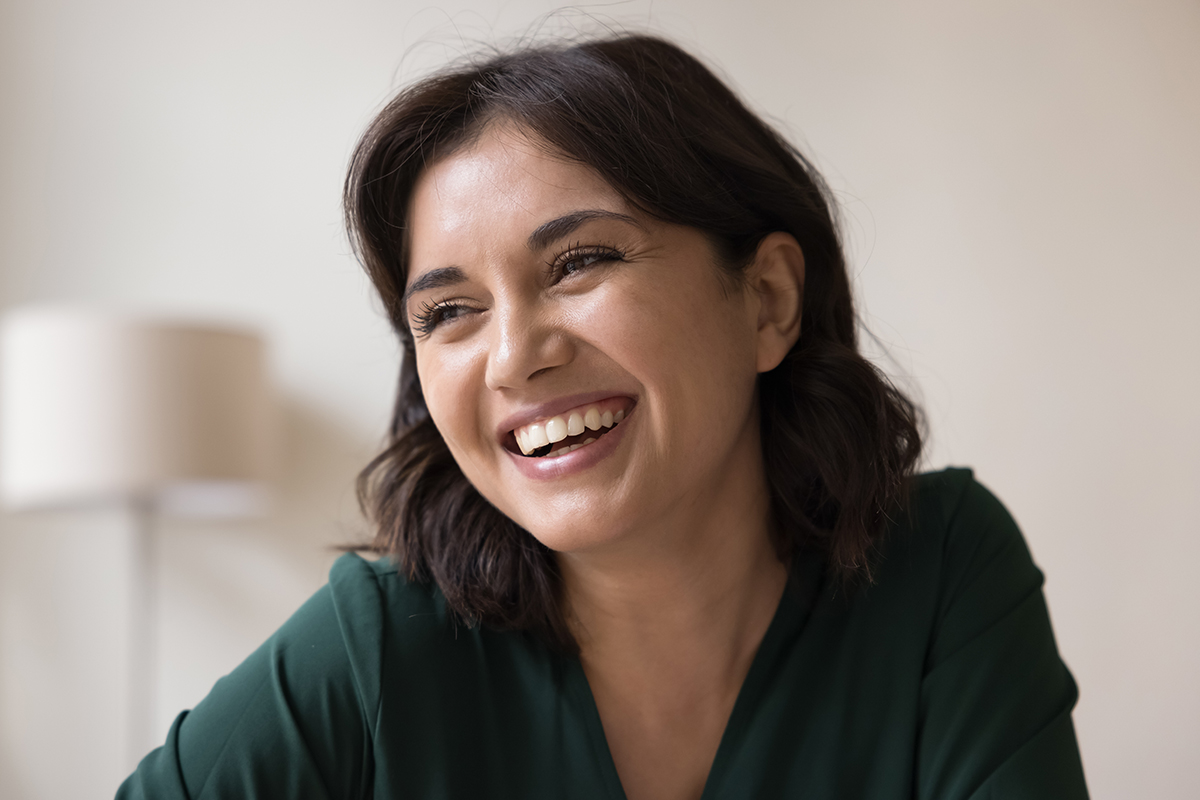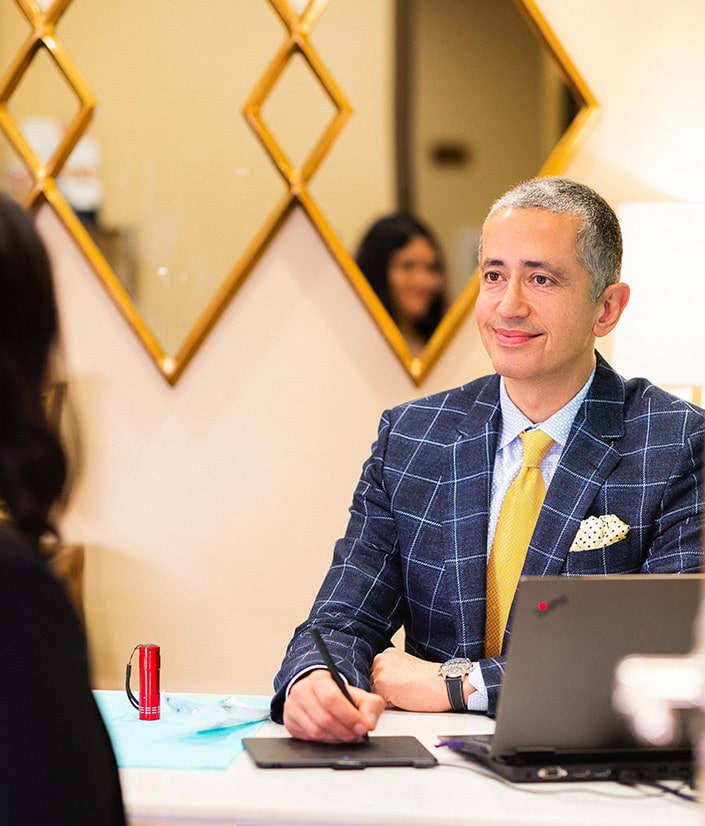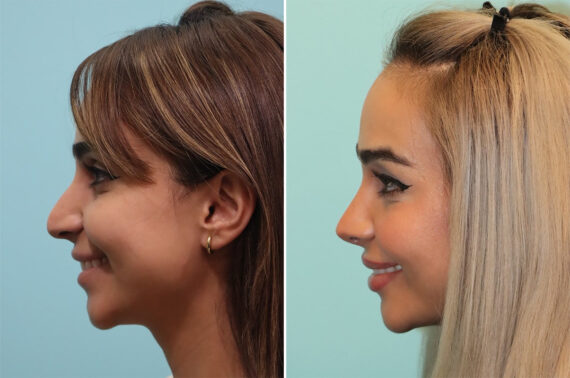Rhinoplasty isn’t just a cosmetic procedure in Persian culture. Many Persians consider the nose a central feature; it shows the ancestry, artistry, and self-expression of a person. It’s no wonder that Iran performs more nose jobs per capita than any other country in the world.
But not everyone is flying to Tehran. Increasingly, patients are turning to experts in the U.S. who understand both the technical challenges of Persian noses and the cultural nuances behind them.
Enter Dr. Shervin Naderi, an elite, double board-certified facial plastic surgeon and ENT specialist whose entire surgical practice is devoted exclusively to rhinoplasty. Dr. Naderi has more than twenty years of practice and Iranian heritage. Dr. Naderi doesn’t just reshape noses, he refines identities.

Quick Facts About Persian Rhinoplasty
- Persian noses often have thick skin, prominent humps, and drooping tips, requiring specialized surgical techniques.
- Dr. Shervin Naderi is a double board-certified expert who focuses exclusively on rhinoplasty and understands Persian anatomy and culture.
- An expert can fix cosmetic and functional issues, such as problems with breathing, in one surgery.
- A non-surgical nose job offers a good choice for people who want temporary changes without downtime.
- If you choose a specialist from the U.S., such as Dr. Naderi, you will get safer care, better follow-up, and results that respect your heritage.
Why So Many Persians Choose Rhinoplasty
From Beverly Hills to Tehran, rhinoplasty has become a widely accepted milestone in Persian families, especially among adolescents and young adults. Many patients undergo their surgery before college, supported by family in what feels like a modern rite of passage.
This cultural normalization has created two distinct aesthetic preferences:
- The Natural Look: Soft, subtle refinements that enhance without announcing surgery.
- The “Done” Look: Sculpted, snatched, and unmistakably contoured—proudly “nose job” chic.
Dr. Naderi excels at both. His secret? Deep conversations. He takes the time to understand your vision, studies your face from every angle, and tailors your procedure to match your dream, while still enhancing your unique features.
The Classic Persian Nose: Aesthetic and Anatomical Truths
Persian noses have a different nasal structure, so they need a skilled surgeon to work on them. Common characteristics include:
- High nasal bridges
- Prominent humps
- Bulbous or drooping tips
- Thicker, oilier skin
- Flared nostrils
These features can overshadow the rest of the face, but when a surgeon refines them, they show other classic Persian beauties. Now we see almond-shaped eyes, sculpted brows, full lips, and striking cheekbones.
How the Persian Nose Job Differs from Other Nose Types
| Feature | Persian Noses | Middle Eastern Noses | Caucasian Noses |
|---|---|---|---|
| Skin Thickness | Thick, sebaceous skin; slower to define post-surgery | Moderate to thick skin; sometimes sebaceous | Thin to moderate skin; heals with sharper definition |
| Nasal Bridge | High bridge, often with a pronounced dorsal hump | High bridge, dorsal hump common but varies by region | Lower bridge, mild or no hump |
| Tip Shape | Bulbous or drooping tip; often requires structural reshaping | Broad or downturned tip; tip refinement commonly needed | More defined tip; less structural work typically needed |
| Functional Concerns | Valve collapse and deviated septum are relatively common | Septal deviations and airway issues are common | Functional issues possible but less frequent |
Functional Nasal Issues: Breathing and Septal Correction
Because Dr. Naderi is also a board-certified ENT, he corrects breathing issues like:
- Deviated septums
- Nasal valve collapse
- Enlarged turbinates
This dual approach means insurance may cover the functional part of your surgery—something few rhinoplasty surgeons can offer.
What’s the Right Age for a Persian Teen to Get a Nose Job?
Dr. Naderi offers rhinoplasty starting at age 14, as long as the nose is fully developed and the patient is emotionally ready. But parental support is crucial. We encourage open, supportive conversations with families because self-image isn’t just physical, it’s emotional.

Safer, more consistent results start here
No travel risks, no guesswork. Schedule with a trusted U.S.-based expert.
Should You Fly to Iran for a Nose Job? Think Twice
While many consider traveling back to Iran for surgery, the risks can be significant:
- Limited access to follow-up care
- Unverified surgical credentials
- Higher rates of complications
- An unstable socio-political climate
In fact, many of Dr. Naderi’s revision cases involve patients who had surgery abroad and returned disappointed.
Managing Thick Skin in Persian Rhinoplasty Procedure
Persian noses often come with sebaceous, thick skin, a real challenge for definition. Dr. Naderi tackles this head-on with:
- Low-dose Accutane pre-treatment (via board-certified dermatologists)
Small amounts of Accutane lessen how oily and thick the skin is before an operation. This helps a surgeon define nasal areas clearly.
- Structural cartilage grafting
This method reinforces the nose’s inner frame, especially the tip and bridge; it helps provide lasting shape, support, and clarity, particularly for patients with thick skin.
- Post-surgical taping
Specialized taping helps control swelling and contour the nose as it heals. It’s particularly useful in the first few weeks post-op, especially for noses with thicker skin.
- Patience
Final results in thick-skinned patients may evolve over 3 to 5 years.
The Art of Healing: Enhanced Recovery at The Naderi Center
Dr. Naderi’s recovery plan resembles his surgical ability. This plan contains the following parts:
- Pre-surgical dietary optimization to reduce swelling
- Arnica supplements
- Low-dose steroids post-op
- Taping protocols to compress swelling and define contours
- Regular check-ins at 1 week, 1 month, and throughout the first year
Every detail is designed to bring your results to life smoothly, swiftly, and beautifully.

Price Transparency: What Does Persian Rhinoplasty Cost?
For your face, knowledge counts. Clarity matters too.
- Primary Rhinoplasty: $15,500 – $22,000
- Revision Rhinoplasty: $45,000 – $50,000
- Alar Base Reduction: $11,000 – $14,000
Costs reflect the complexity and specialization of your case. Functional aspects may be billed through insurance.
Filler Fans, Rejoice: Non-Surgical Options Are Available
Not ready for surgery? For the right candidate, non-surgical rhinoplasty can smooth bumps, lift the tip, and improve symmetry—all with filler. Results last up to 18 months.
It’s not permanent, but it’s powerful.

Why Persian Patients Travel to Dr. Naderi for Nose Surgery
- Over two decades of rhinoplasty-only experience
- Double board-certified in Facial Plastic Surgery & ENT
- Deep cultural understanding of Persian beauty ideals
- International clientele and 5-star reputation
- Tailored, artistic rhinoplasty results that never look “one-size-fits-all”
Dr. Naderi’s approach to Persian rhinoplasty is part science, part sculpture, and completely personal.
Ready to Refine the Most Iconic Feature of Your Face?
A Persian nose deserves the hands of a true specialist. This applies whether one wants a subtle change or a big, shaped transformation.
Dr. Shervin Naderi doesn’t just reshape noses; he elevates identities, honors heritage, and helps your true beauty take center stage.
Request a consultation today. Your most confident self is just one procedure away.
FAQs about Persian Rhinoplasty
How long does it take to heal?
Swelling lasts 6–12 months, with thick-skinned patients seeing full definition in 3–5 years.
Can I combine surgery with breathing correction?
Yes. Functional issues like septal deviation can be addressed at the same time.
What if I want a very natural look?
Absolutely. Dr. Naderi is known for delivering ultra-refined, barely-there results when requested.
What’s the best age to get a nose job?
As early as 14, once growth is complete, with family support.
Is non-surgical rhinoplasty an option?
Yes, for smoothing, contouring, and correcting asymmetry with no downtime.
Is it safe to get a nose job in Iran?
Not recommended due to safety, post-op care limitations, and socio-political factors.
Will I have visible scars?
No. Dr. Naderi uses techniques that result in minimal or hidden scarring. The small incisions typically heal to be nearly invisible.
